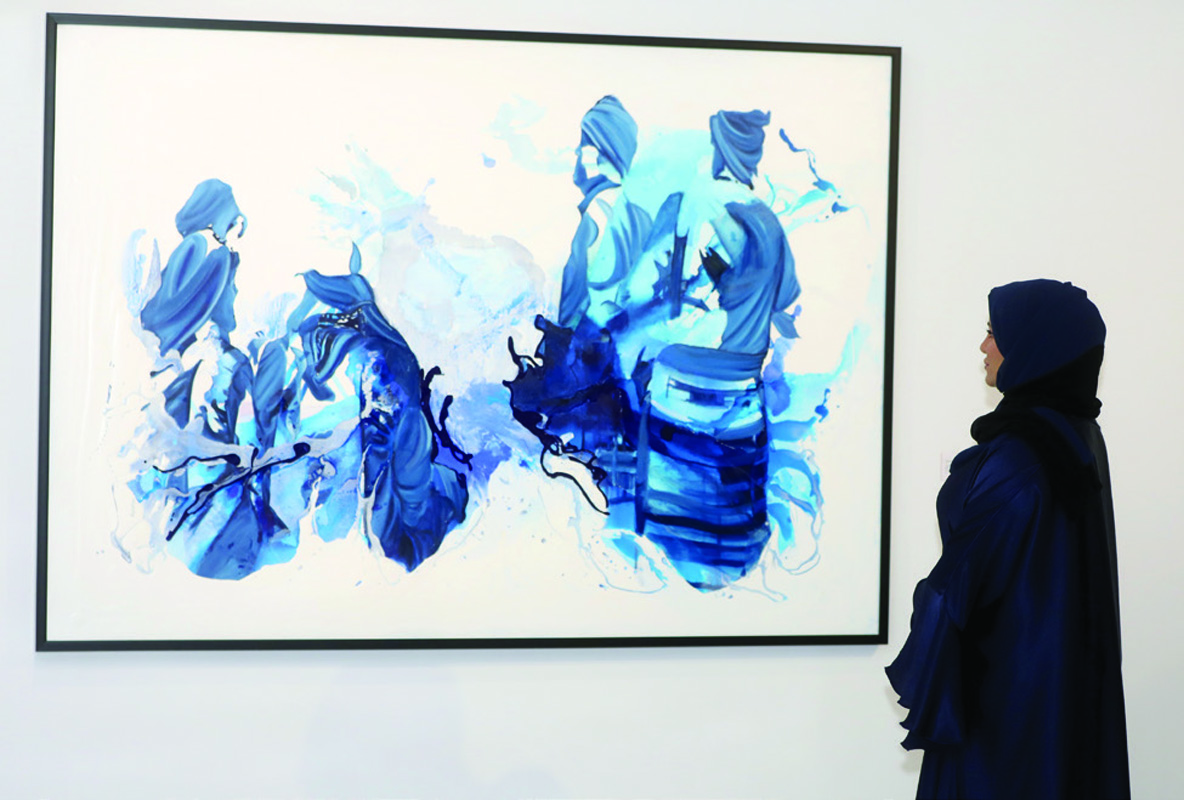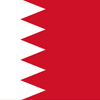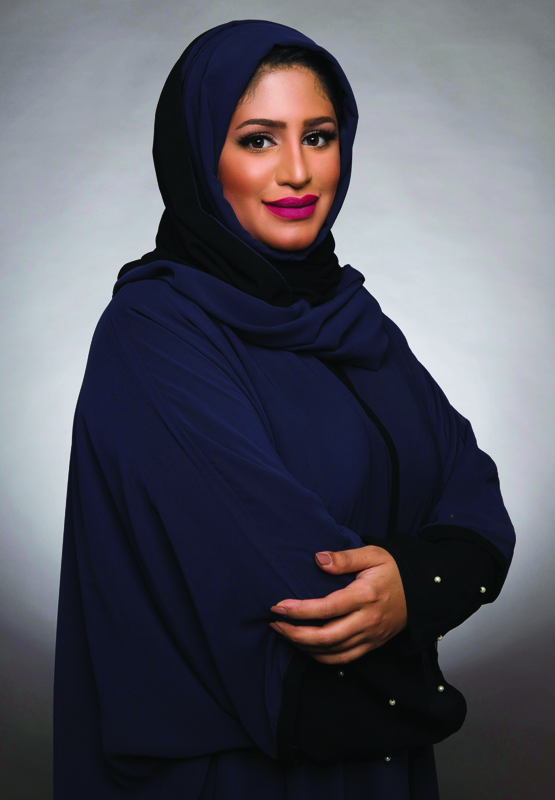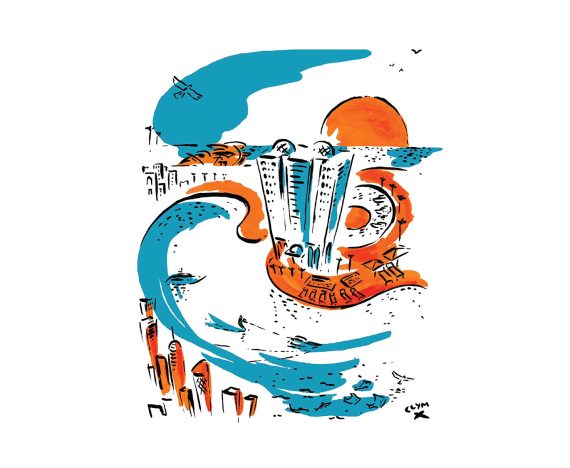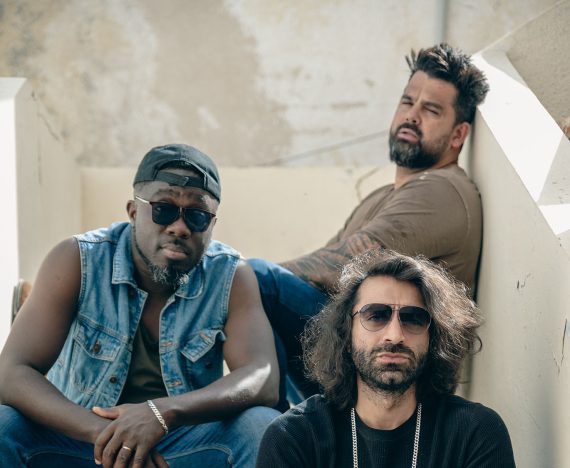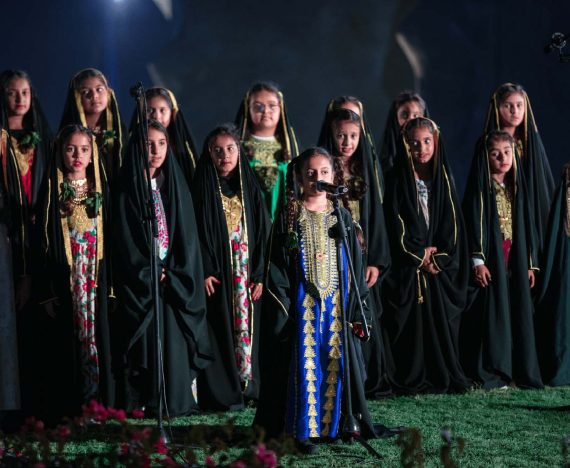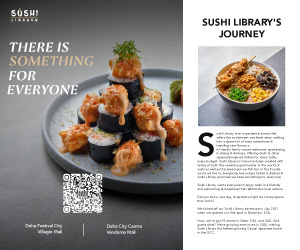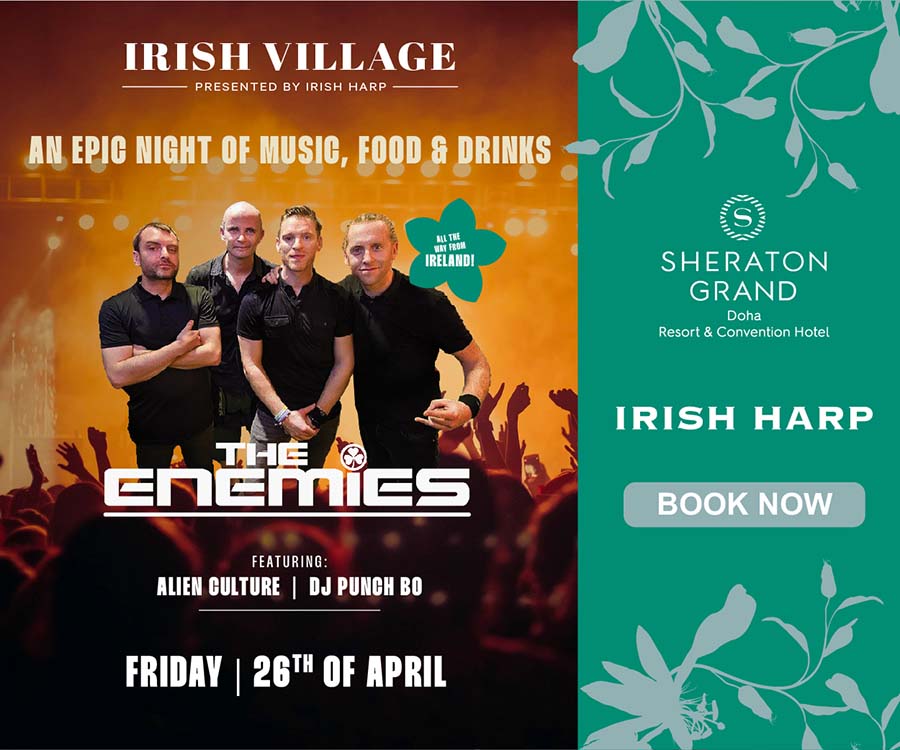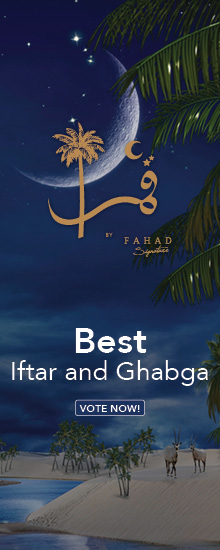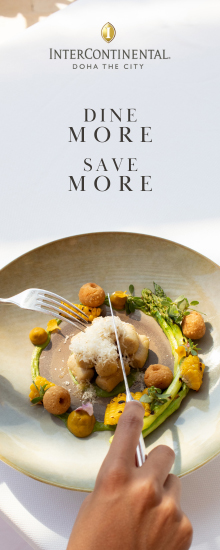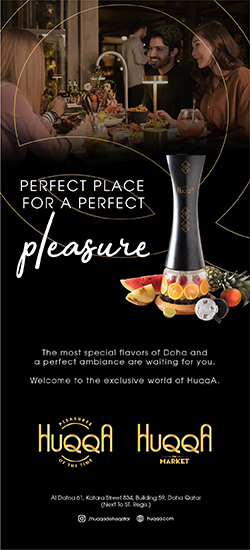BEYOND BLUE
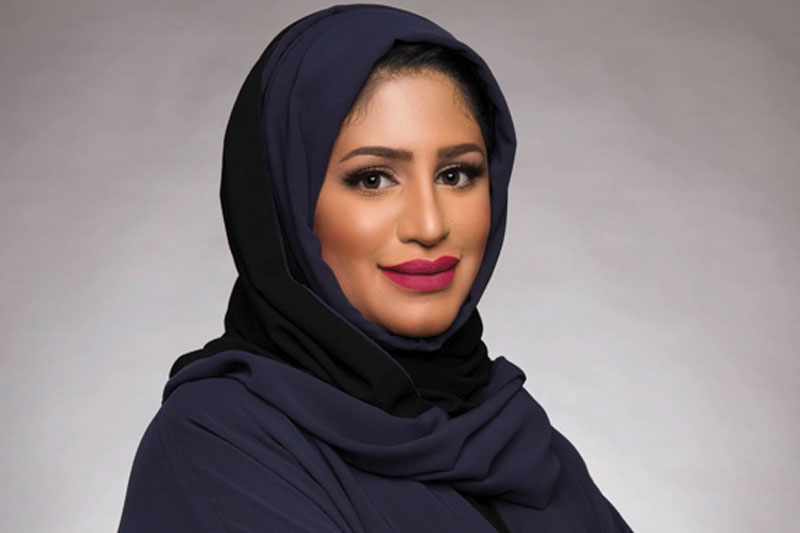
Muna Al-Bader is creating strokes of magic on canvases, displays, and walls throughout the city of Doha and beyond.
Muna Al-Bader is a well-established Qatari artist as well as Qatar’s art ambassador. She’s known for her mesmerising works that peek deep into the viewer’s soul, allowing them to feel pain, struggles and love as portrayed by her pieces. Her distinct style delivers a universal visual message that can be read by different cultures and nations — connecting people and building civilizations as artists have done in the past. We sit down with Muna to talk about her journey and the success she has accumulated along the way.
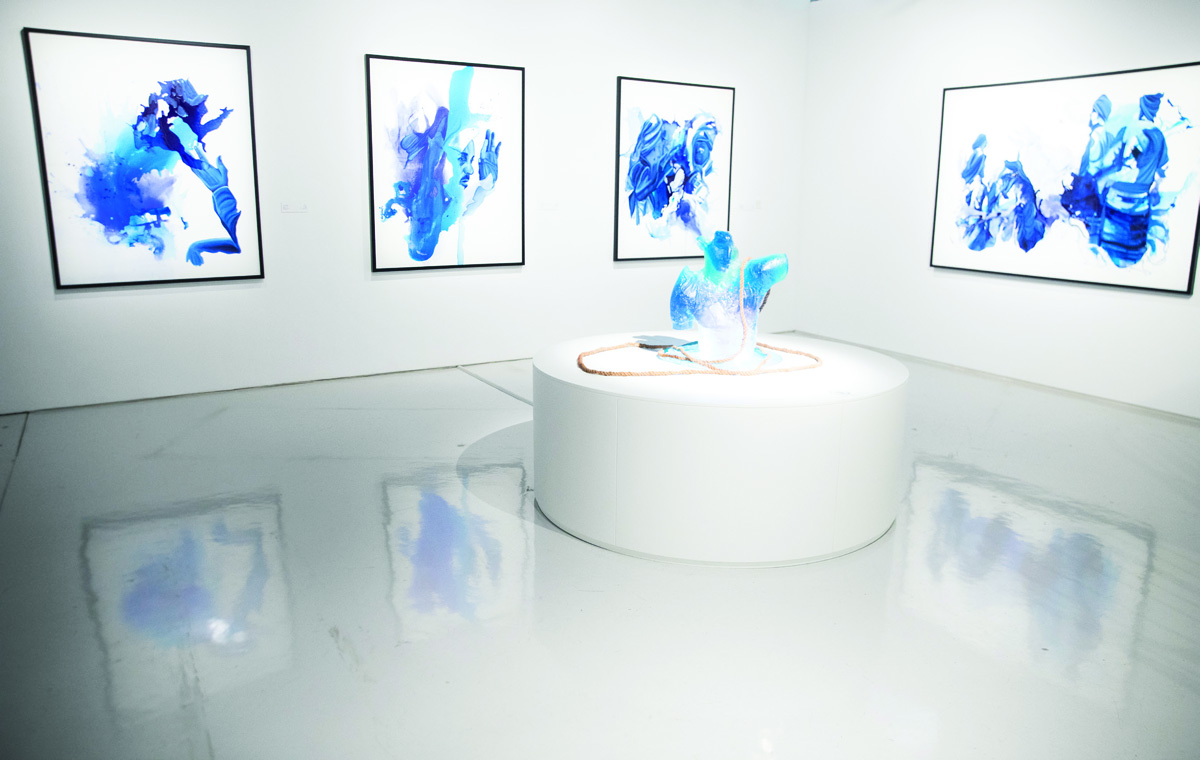
What inspires your art?
The artist is the son of his environment, and I have been inspired by everything around me. I am inspired by the blue of the sky and the clearness of the sea. Blue, the colour of our world. It’s everywhere, from nowhere. This colour has always connected to human emotions. Happiness and sadness and that’s what I have been reflecting in my paintings recently.
Is there a particular reason or inspiration behind choosing the colour blue as your statement?
During the past few years, I have been exploring the power of blue. It’s the colour of the sky and of our world; beautiful and noble. I use blue as an ode to the role it played in journeys on pearl diving expeditions. For our forefathers, blue was more than a colour, it was a song; a song of life, a song of joy and success.
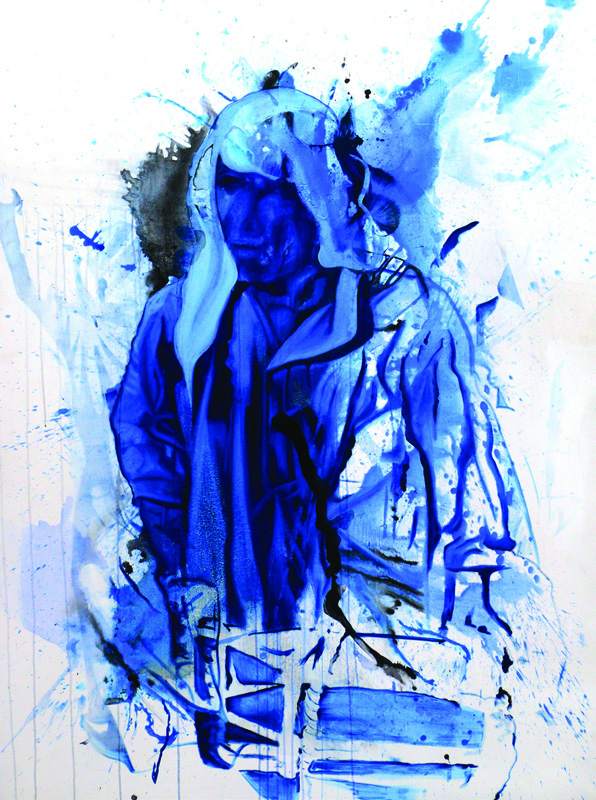
How did you know this was the path you were meant to be on? Was the transition from studying information, communications, and business hard?
I fell in love with the world of computers and technology in my childhood, and I also loved art from my childhood. After I graduated high school, I lived in a frank relationship between passion and self-realisation through knowledge and what the career market requires. So, I chose to start the university stage, but at the same time I began to join arts centres to develop my artistic talent.
We’ve noticed that many of your recent paintings and sculptures, encompass an abstract approach whilst remaining true to the figure represented. What made you go towards this method?
My recent works summarise the memories of the people and sailors of the sea in the past. I want to bring back those memories and that cherished history. In the 1930s, our tired sailors unleashed musical beats on the wooden floor of the boats during their pearl diving journeys, these performances transported them to a different realm, forgetting their everyday existence. This is the story behind my art.

What’s something that is essential to your creative process?
One of the most important things that I must do before starting to draw is to prepare the right place and the right song. Music is the food of hearing and mind, and with it I enter my own world. Through this music I am transported, sailing in my own blue world, which allows me to hone my spiritual and visual strengths to create new concepts.
How has your work evolved over time; do you see a significant change in the way you portray your elements?
My work has changed dramatically over the past 10 years. My works are now noisy, with bright colours that please the audience, while the violent brush movement reflects feelings of joy and sadness. I like to think that I can now connect humanity to my art.
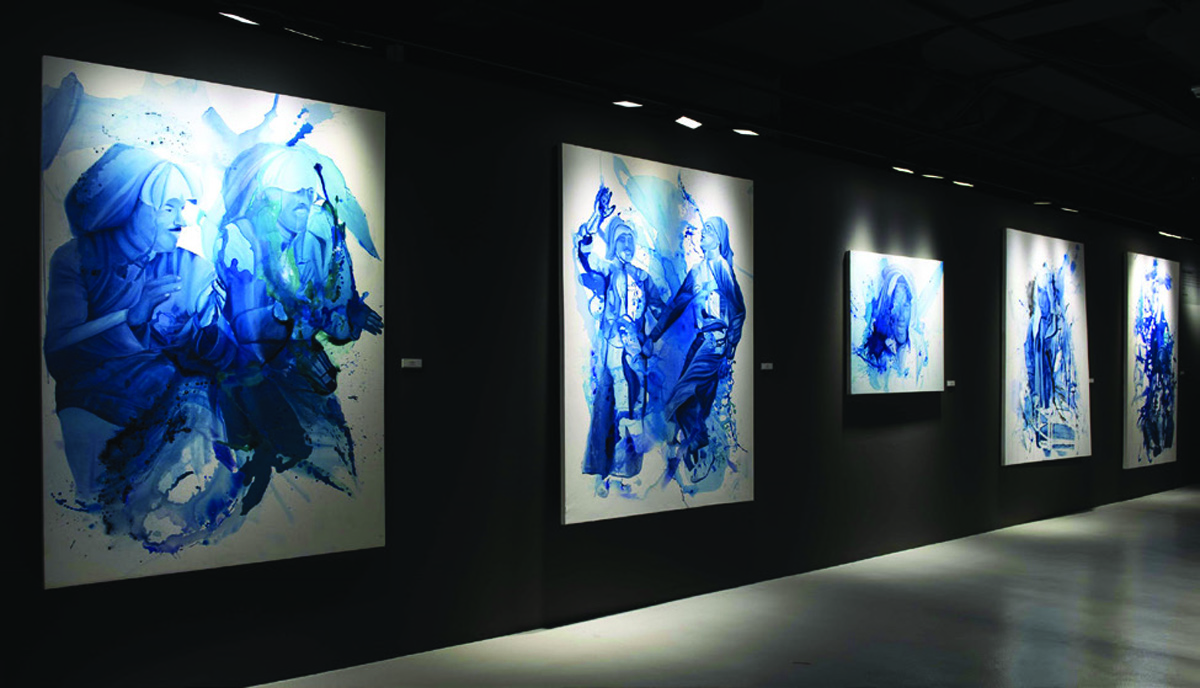
We’ve seen your murals flourish around the city of Doha, what do you hope bystanders experience when they see your work on the streets?
My graffiti aims to convey clear messages to the wider audience. For example, my graffiti artwork at Katara Cultural Village shows the heritage of Qatar through illustrating the sailors during their pearl diving journeys and how their tiredness at sea is the foundation of what our country is today.
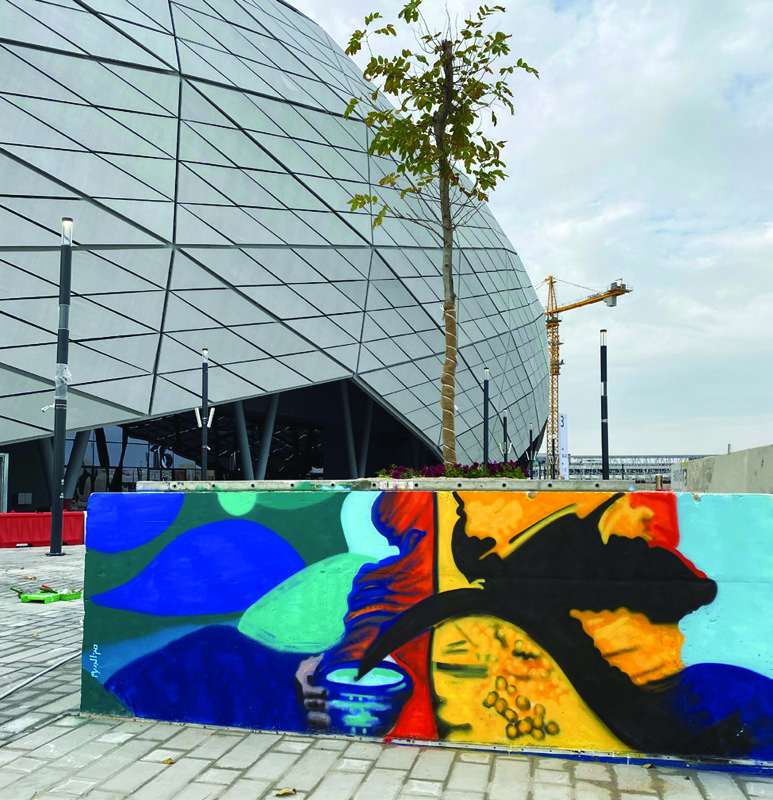
Where do you hope your art will take you in the future?
My art has already travelled far over the last few years, such as Europe and North Africa, and I wish to see it travel even wider, in effect to place Qatari art on the cultural map of the world.
